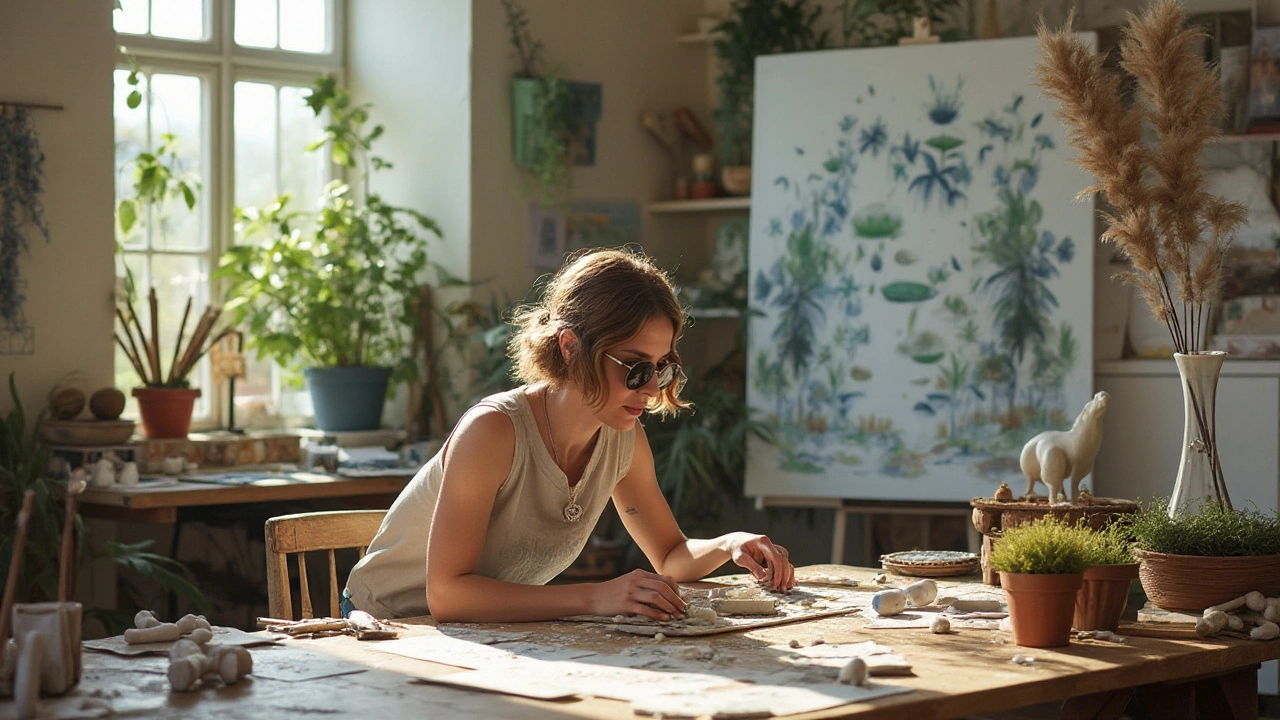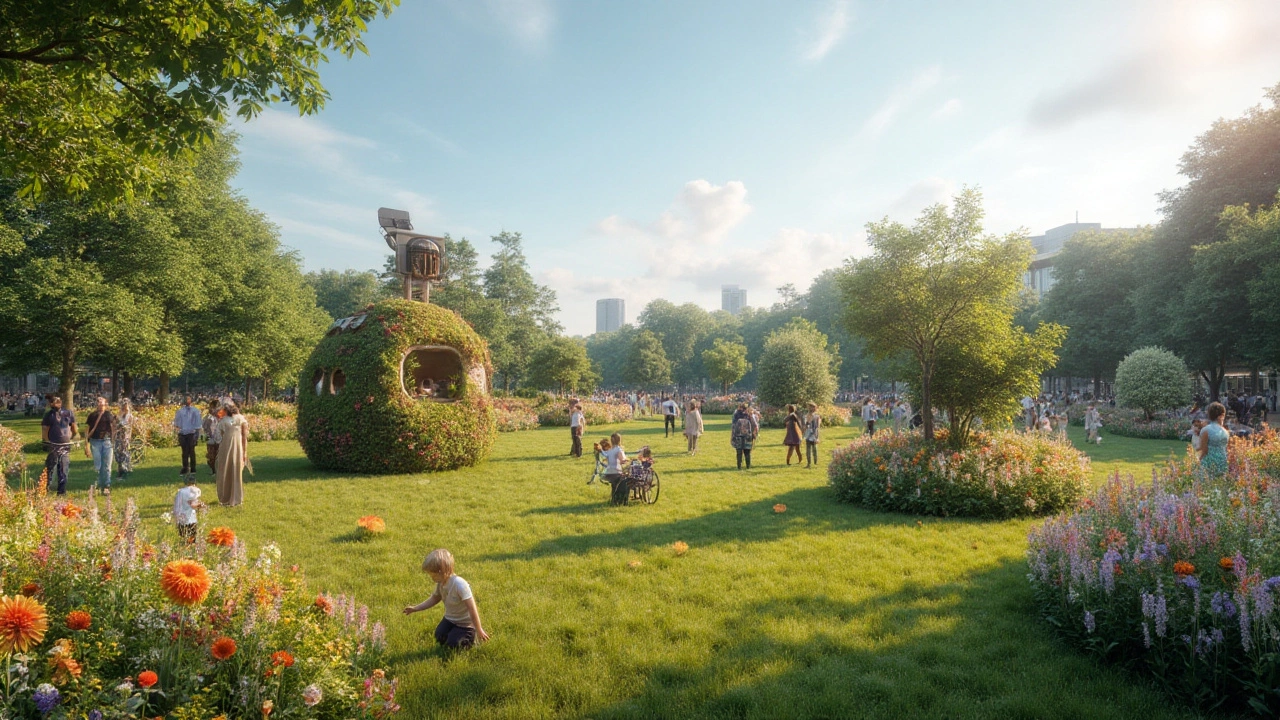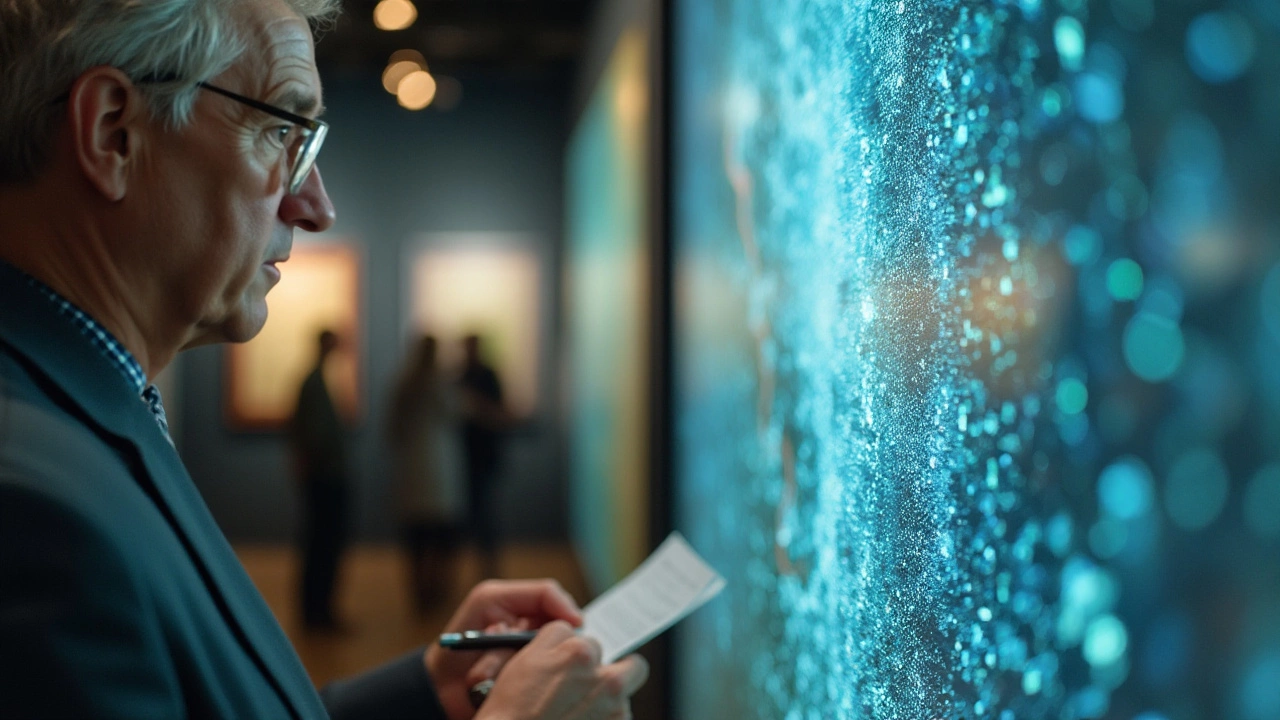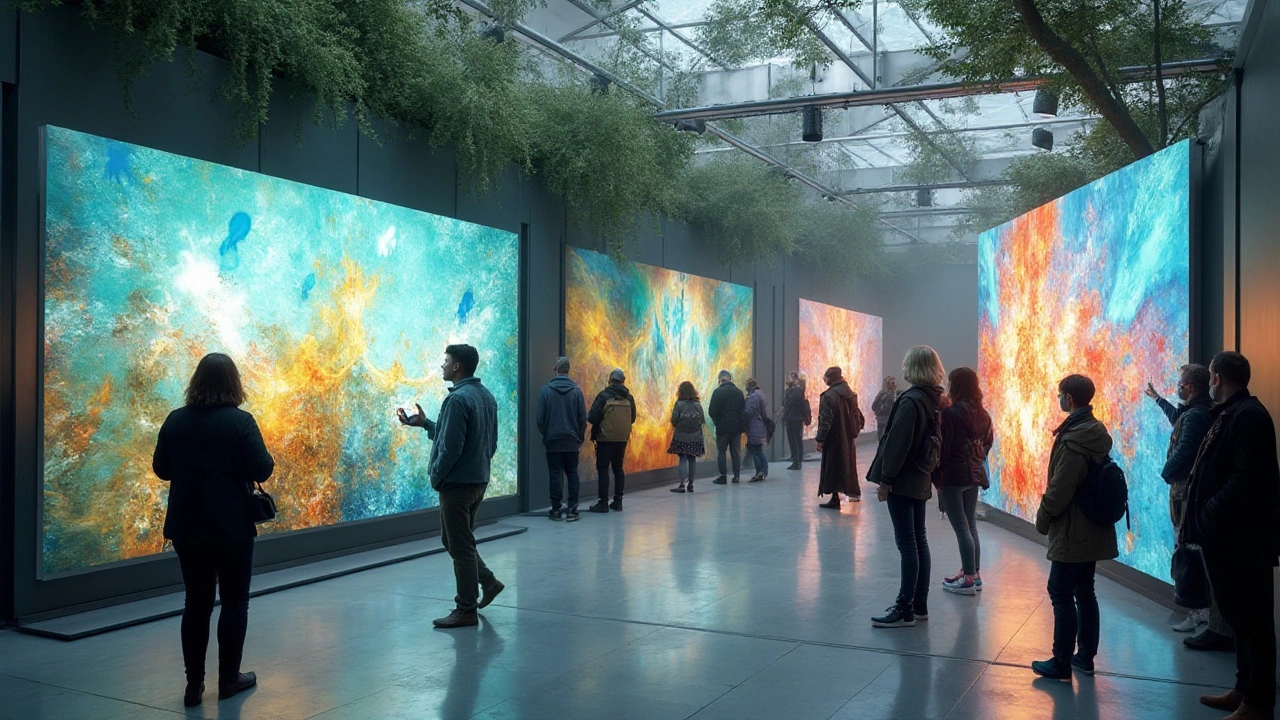In the ever-evolving world of contemporary art, artists are constantly breaking new ground, challenging norms, and embracing fresh ways of thinking. One of the most exhilarating trends currently shaping the artistic landscape is the integration of technology, particularly AI, in creating digital art. Artists today are using algorithms and machine learning to generate pieces that intrigue the senses and provoke thoughtful discussions about the role of tech in art.
Equally important is the rising emphasis on sustainable art practices. With a growing awareness of environmental concerns, many creators are reflecting on their ecological footprints, opting for recycled materials, or devising innovative ways to minimize waste. This commitment not only influences how art is made but also how it is valued and appreciated by audiences worldwide.
Furthermore, galleries and art spaces are becoming more interactive, offering immersive experiences that invite direct audience engagement. These installations often blur the lines between spectator and participant, fostering a deeper connection to the work.
Lastly, contemporary art remains a powerful medium for addressing pressing societal issues. Artists are making poignant social commentaries through their work, facilitating conversations on cultural identity, politics, and human rights, thereby reshaping societal narratives and urging viewers to reflect on the world around them.
- The Rise of AI and Digital Art
- Sustainable Art Practices
- Interactive and Immersive Experiences
- Cultural and Social Commentaries
The Rise of AI and Digital Art
In recent years, the world of contemporary art has been profoundly influenced by the rapid advancement of technology. This evolution notably includes the rise of AI and digital art, a trend that is reshaping our understanding of creativity. Artists are no longer limited to traditional tools; rather, they are embracing cutting-edge technologies to explore new forms of artistic expression. AI tools like neural networks and generative adversarial networks (GANs) have become increasingly popular, allowing artists to create works of art that were once unimaginable. These technologies can simulate human thought processes, helping artists to generate unique patterns, visuals, and even compose music. Such AI-generated art challenges conventional notions of authorship, raising exciting discussions about who the creator really is.
One of the most fascinating aspects of this trend is the collaboration between human artists and AI. Creators guide the algorithms by feeding them initial data and parameters, but the magic happens when the machine starts to 'learn' and independently produce complex art forms. Take, for instance, the renowned artist Refik Anadol, who utilizes AI to produce immersive installations that transform architectural spaces into mesmerizing light spectacles. His work epitomizes the seamless blend of data and art, offering audiences a visually and intellectually stimulating experience. This new genre of digital art also opens up endless possibilities for customization and interactivity, as each viewer can engage with the artwork differently based on their unique experiences and perceptions.
Moreover, the accessibility of AI tools has democratized the creative process. Artists no longer require expensive resources or profound technical expertise to produce works that make a significant impact. Many freely accessible platforms and software have emerged, enabling even those with minimal technical skills to experiment with digital art. This has been a game-changer for creativity, allowing diverse voices to contribute to the art scene. According to a report by the World Economic Forum, digital art and other forms of creative tech are expected to grow exponentially, with industries increasingly recognizing their value in fields such as entertainment, advertising, and education.
As with any significant technological shift, the integration of AI into art raises ethical and philosophical questions. Concerns about originality, intellectual property rights, and the potential for AI to surpass human artistry continue to spark debate. However, proponents argue that AI serves as a tool that enhances human creativity rather than replaces it. Art, at its core, is a means of human expression, and AI provides a new medium through which this expression can be realized. A notable voice in this conversation, Mario Klingemann, a pioneer in AI art, once said, “The role of the artist changes to that of a curator, a director, or an orchestrator.”
“AI should be seen as an amplification, not a replacement,”Klingemann’s statement highlights the evolving role of artists in the digital age.
The rise of AI and digital art continues to transform the contemporary art landscape, inviting both admiration and introspection. It challenges traditional art forms, encourages creativity beyond physical boundaries, and fosters collaboration between technology and human ingenuity. For those willing to embrace this new wave of artistic expression, the possibilities are as vast as the imagination itself.

Sustainable Art Practices
As the world grows increasingly aware of the impact of human activity on the environment, the sustainable art practices movement is gaining traction among contemporary artists. This approach not only seeks to minimize the ecological footprint of art production but also emphasizes the role of the artist as an advocate for change. Many artists are exploring materials that are either recycled or naturally abundant, leading to creations that are not just visually appealing but also ethically sound. This shift is encouraging galleries and collectors to reconsider what they value in art, placing ecological responsibility alongside aesthetic and conceptual merit.
One of the driving forces behind this trend is the growing concern for our planet's future. Artists like Pam Longobardi, known for her work with ocean plastic debris, are using their art to highlight environmental issues and inspire societal change. By gathering materials from polluted beaches, Longobardi transforms these remnants of consumer culture into striking installations that call attention to the pressing need for action. Such works demonstrate how art can serve as both a medium of expression and a powerful tool for advocacy.
Art institutions are beginning to catch on, with initiatives supporting sustainability in their operations and exhibitions. Many museums are now focusing on energy-efficient technologies and sustainable materials in their displays. These changes are not just responsive to environmental imperatives but also reflect a broader cultural shift towards responsible consumption and production patterns. This trend highlights the potential for collaborations between artists and industry leaders, aiming to create more sustainable practices across the board.
While the art world strides towards sustainability, it's vital to acknowledge the challenges that come with it. A significant obstacle is the availability and cost of sustainable materials, often limiting the scope and scale of an artist's vision. However, these constraints are sparking new waves of creativity, prompting artists to explore unconventional mediums and methods. The very nature of sustainable art calls for innovation, as creators seek to tell stories about our shared environment using whatever resources are at hand.
To support artists in this movement, institutions and communities can offer grants and residencies focused on sustainability. This support not only fosters innovation and experimentation but also contributes to the broader conversation about art's role in shaping sustainable futures. As these practices continue to evolve, they challenge traditional notions of what art can and should be, pushing boundaries and opening new dialogues about our relationship with nature.
In conclusion, as the art world wakes up to the challenges posed by climate change, sustainable art practices are not just a trend—they're becoming a crucial part of how artists engage with the world. By reevaluating the materials and methods they use, artists are crafting a dialogue between art and ecology that challenges us to rethink our impact on the planet. It's a movement that's not just reshaping the art world, but also connecting people with the pressing environmental issues of our time.

Interactive and Immersive Experiences
The art world in 2024 has seen an electrifying shift towards interactive and immersive experiences. This trend resonates with our innate desire for connectivity and engagement, as audiences no longer wish to be mere observers but active participants. These experiences often blend different forms of media, including digital installations, virtual reality (VR), and augmented reality (AR), creating multi-sensory environments that captivate the viewer's imagination. Museums and galleries have taken bold strides in curating such interactive art installations. This approach allows art lovers to step inside the artwork, so to speak, transforming passive viewing into a dynamic encounter. With VR, for example, visitors can virtually enter an artist’s world, witnessing landscapes or scenarios that evoke strong emotional responses. One notable project is the digital recreation of iconic historical art pieces, where viewers can explore and interact with these masterpieces in ways that were previously unimaginable.
Artists embracing these technologies have pushed the boundaries of contemporary art, making it more accessible and engaging. This heightened interactivity represents a paradigm shift where art is no longer confined within static frames; instead, it comes alive through technology. Interactive artworks are not only visually striking but also underscore broader themes, from environmental consciousness to the essence of human cognition. These artworks often encourage viewers to reflect on their roles in both the physical and digital realms. For example, major exhibitions now include touch-sensitive walls or floors that light up in response to human interaction, symbolizing the profound impact we have on our surroundings.
"Immersion not only transforms art engagement, but also redefines the very way we perceive reality," suggests Maria Abramović, a leader in performative and immersive art.
In this digital age, some creators are using data as part of their medium, turning statistics into mesmerizing interactive pieces. This approach uses real-time data, transforming it into visual art that shifts and adapts with the audience's participation. This dynamic form not only makes the invisible visible but invites deeper contemplation about the data’s source. Immersive art experiences have also ventured into the realm of sustainable art, with installations designed to raise awareness and provoke discussion about environmental issues. Such pieces might include themes on climate change, using digital media to simulate natural events, highlighting humanity's impact on the planet. The fusion of these elements aims to spark meaningful conversations, urging viewers to consider their relationship with the natural world and the role they play in it. It's this collaborative dialogue that truly defines the essence of interactive and immersive art in today's society.

Cultural and Social Commentaries
In today's world, where societal issues are at the forefront of global conversations, contemporary art has become a vital platform for cultural and social commentaries. Artists are using their work to question, critique, and bring awareness to various topics such as cultural identity, politics, climate change, and human rights. This artistic movement is not just about creating visually appealing pieces; it's about evoking emotions, stimulating thoughts, and inspiring action among audiences. More than ever, art is seen as a tool for storytelling and advocacy, bridging gaps between diverse audiences and fostering a sense of shared understanding.
One of the most notable examples of cultural commentary in contemporary art is the exploration of identity politics. Artists are delving into issues surrounding race, gender, and ethnicity, often drawing inspiration from their own experiences. This introspective approach allows them to create authentic and relatable works that resonate with viewers on a personal level. Through their art, these creators are sparking dialogues about the complexities of personal and collective identities, challenging viewers to consider their own biases and assumptions. Digital art particularly has made it feasible for these narratives to reach broader audiences online, breaking geographical barriers and provoking discussions in real-time.
Moreover, political art remains a dominant force within the contemporary scene. Artists are responding to current events, using their platforms to critique governmental policies, social norms, and corporate practices. Their work often serves as a reflection of the times, capturing the essence of societal challenges and triumphs. These artworks might incorporate a mix of traditional and digital mediums, or even employ interactive elements to engage viewers in a multisensory experience. By encouraging audiences to immerse themselves in these pieces, artists aim to stimulate reflection and engagement, potentially driving social change.
Many artists are also focusing on environmental issues, using their creations to shed light on the impact of human actions on the planet. Sustainable art, combining aesthetic and ecological considerations, plays a crucial role here. Artists often repurpose and recycle materials, crafting installations that highlight the beauty in sustainability. This approach not only emphasizes the importance of eco-friendly art practices but also invites audiences to rethink their own environmental footprints. As an artist eloquently put it, "Art has the power to reimagine the world, reminding us of both the beauty we have and the responsibility we hold."
"Art has the power to reimagine the world, reminding us of both the beauty we have and the responsibility we hold." - A renowned artist
The significance of cultural and social commentaries in art cannot be overstated. These pieces serve as catalysts for important conversations, breaking down barriers and fostering empathy. They provide a mirror to society, reflecting both its flaws and potentials and urging viewers to consider their roles within these complex narratives. As contemporary artists continue to embrace this role, they not only enrich the art world but also contribute to shaping a more conscious, informed, and engaged global community.

